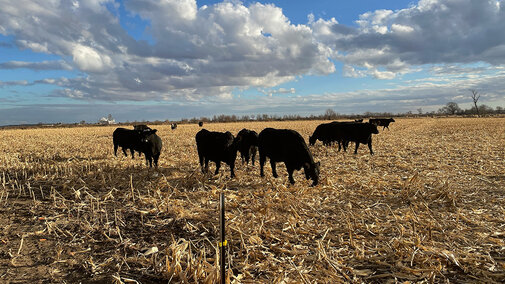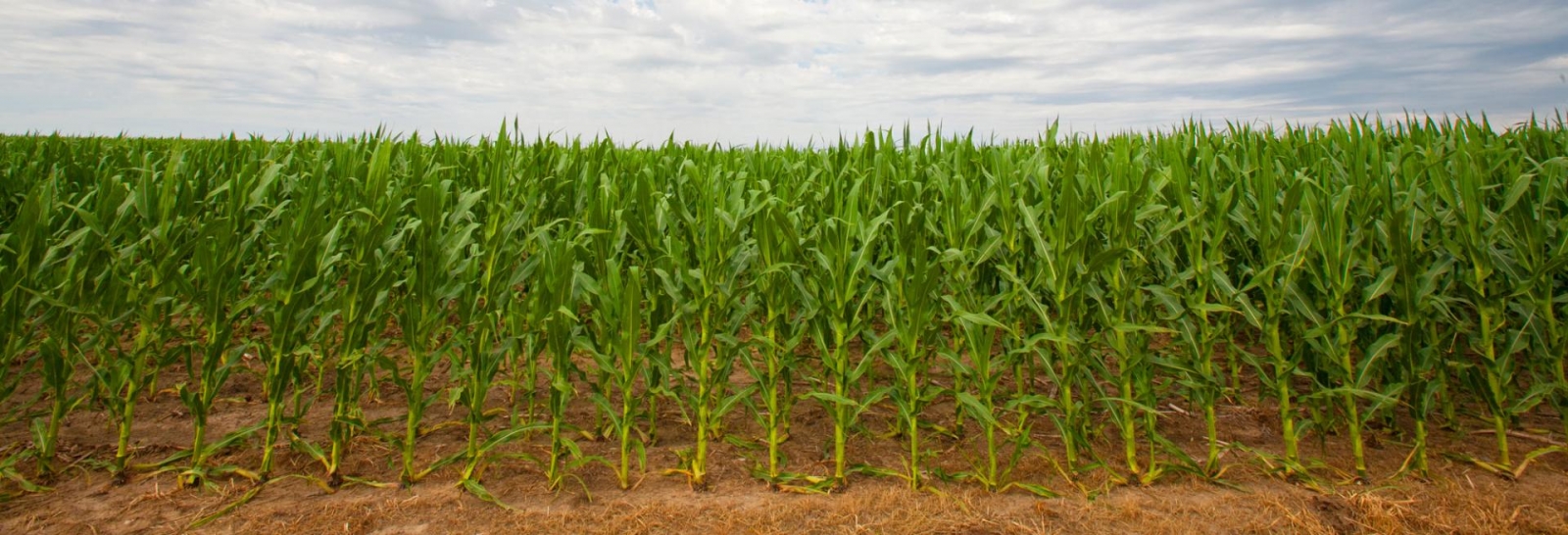Southern Rust and Corn Residues
Southern rust has made noticeable impacts on corn fields in Nebraska this year. As these fields open for grazing following harvest, many are wondering whether rust affects how we manage livestock on those acres.
Southern rust (Puccinia polysora) is a fungal disease that creates lesions on corn leaves, weakening the plant in the process. While limited research exists on the direct effect on corn leaf quality, what we do know is that infection causes leaves to senesce earlier and nutrients to be remobilized from the leaf and stalk to help with grain fill as the plant’s photosynthetic capacity declines.
So, what does this mean for grazing residue? Overall residue quality may be somewhat lower, but the bigger concern is that there’s simply less leaf material left. Along with husks, leaves are the primary component of residue-based diets. Their loss, therefore, can indirectly lower the overall residue feed value. In addition, with earlier senescence and existing tissue damage, corn leaves are likely to decompose faster than normal — shortening the window of quality grazing even further.
There is one bright spot: southern rust requires actively growing tissue to survive, so it won’t overwinter in residue. It must blow in from the south each year, meaning there’s no risk of spreading the disease through grazing or feeding infected residue.
Southern rust may not change corn residue quality directly, but it can reduce the amount and quality of available leaf material. Monitoring residue condition and adjusting stocking rates or grazing duration accordingly can help make the most of affected fields while maintaining livestock performance.
Corn and Sorghum Residue Grazing
When corn and sorghum plants die prematurely due to drought stress and/or diseased leaves, lower quality stover (stalks and leaves) residue may result.
Research indicates that severe leaf diseases may raise fiber content while decreasing digestibility by over 10%. Further, fungal leaf diseases can reduce livestock grazing intake with premature plant death, resulting in potential nitrate accumulation.
However, both corn residue and sorghum stover can be good nutrition for mid- to late gestation cattle following fall grain harvest. Although both crop residues provide the highest nutrient content when grazed soon after grain harvest, it is highly recommended to prioritize grazing cornstalk fields first. Corn leaves tend to detach from stalks within one to two months after harvest and blow out of fields, which dramatically lowers the grazing nutrition. In contrast, grain sorghum stover leaves remain attached to their stalks much longer into the winter and early spring, retaining their grazing nutritional value longer.
Previous grain sorghum yields can be used to set optimum grazing stalking rates such as one acre per cow per month for every 100 bushels of grain sorghum fall harvested.
Unlike corn residue, grain sorghum stover has a threat of prussic acid toxicity when livestock graze basal plants regrowth immediately following a frost. Therefore, to reduce potential prussic acid toxicity risk, delay grazing turnout until seven days, after plant killing freezing temperatures. Also, sorghum stover’s higher nutrient stem content may make it more prone to nitrate toxicity risk — limit grazing of drought-stressed residue field so cattle are not forced to graze lower stalk stems. Feed good quality hay first to cattle before turning hungry cattle out. If lower quality stover is a concern, provide nutrition supplements for energy and protein.
More crop residue information is available on CropWatch and UNL Beef.

